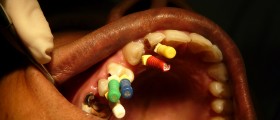
Today root canal problems affect people of all ages. The problems start with tooth decay and the infection spreads to the dental pulp causing more serious consequences. The condition requires prompt treatment, this way the affected tooth can be cured and extraction prevented. Once the problem and its accompanying symptoms occur a person should not think it will go away on its own and no matter how frightening it can be he/ she is due to visit a dentist.
Only a dentist can confirm the condition and treat it accordingly. Root canal affects the dental pulp, an essential part of the tooth. The dental pulp contains blood vessels and nerves significant for tooth's vitality. Once the infection affects the dental pulp, it can be destroyed to a significant extent. The damage subsequently affects the general health of the infected tooth. Even if they are serious, root canal problems can be successfully dealt with root canal treatment.
Root Canal Problems Characteristics
Inflammation of the dental pulp and its structures is always accompanied by a sharp toothache. The inflammation is caused by bacteria which have reached the dental pulp either via the decayed tooth or they originate from the infected gums. The pain results from compression of the inflamed tissues of the pulp. In some cases the nerve can be directly damaged by bacteria.
The process of inflammation develops quickly. Apart from being spontaneous, toothaches can significantly increase with biting and chewing. If the condition is not treated on time the harmful bacteria may eventually enter the blood stream and reach distant organs causing their damage as well. This kind of damage most commonly affects the heart, blood vessels, liver and kidneys.
Treatment for Root Canal Problems
There are two approaches for root canal problems. The first one is the actual treatment of the affected tooth and the second option is extraction of the seriously damaged tooth. The effectiveness of the treatment is achieved in approximately 80-90% of all cases. The treatment is performed by a well experienced dentist since it requires competence and proper knowledge.
The first thing a dentist does is numb the gums with an injection of a local anesthetic. With the assistance of a drill and additional tools a dentist removes the pulp from the tooth and fills the inner space of the drilled tooth with medicines, temporary filling materials and a fine root canal filling. The treatment ends with a permanent filling or a crown.

















Your thoughts on this
Loading...